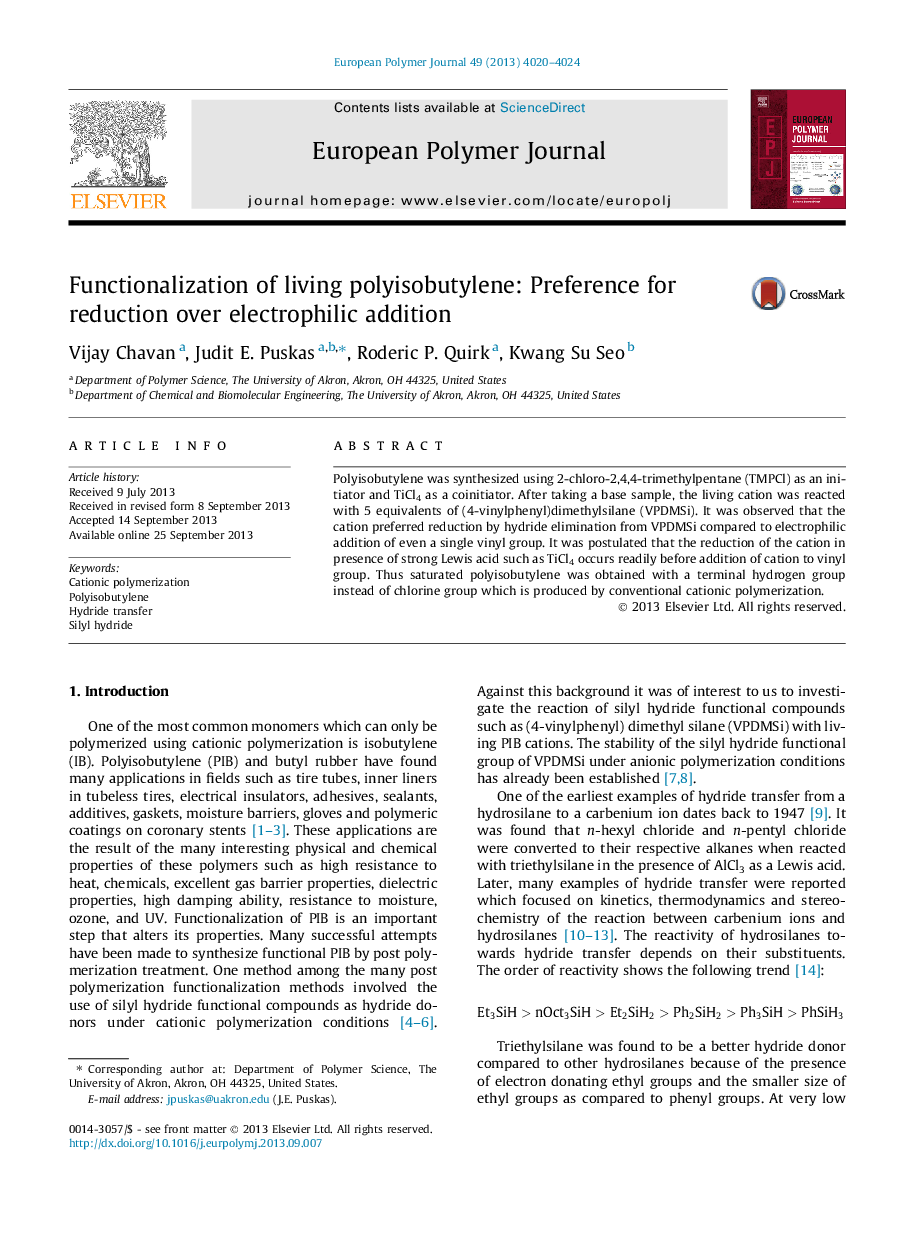| Article ID | Journal | Published Year | Pages | File Type |
|---|---|---|---|---|
| 1401946 | European Polymer Journal | 2013 | 5 Pages |
•Polyisobutylene was synthesized using 2-chloro-2,4,4-trimethylpentane and TiCl4.•The reduction of the cation was achieved by hydride elimination.•Polyisobutylene with a terminal hydrogen group was obtained.
Polyisobutylene was synthesized using 2-chloro-2,4,4-trimethylpentane (TMPCl) as an initiator and TiCl4 as a coinitiator. After taking a base sample, the living cation was reacted with 5 equivalents of (4-vinylphenyl)dimethylsilane (VPDMSi). It was observed that the cation preferred reduction by hydride elimination from VPDMSi compared to electrophilic addition of even a single vinyl group. It was postulated that the reduction of the cation in presence of strong Lewis acid such as TiCl4 occurs readily before addition of cation to vinyl group. Thus saturated polyisobutylene was obtained with a terminal hydrogen group instead of chlorine group which is produced by conventional cationic polymerization.
Graphical abstractFigure optionsDownload full-size imageDownload as PowerPoint slide
